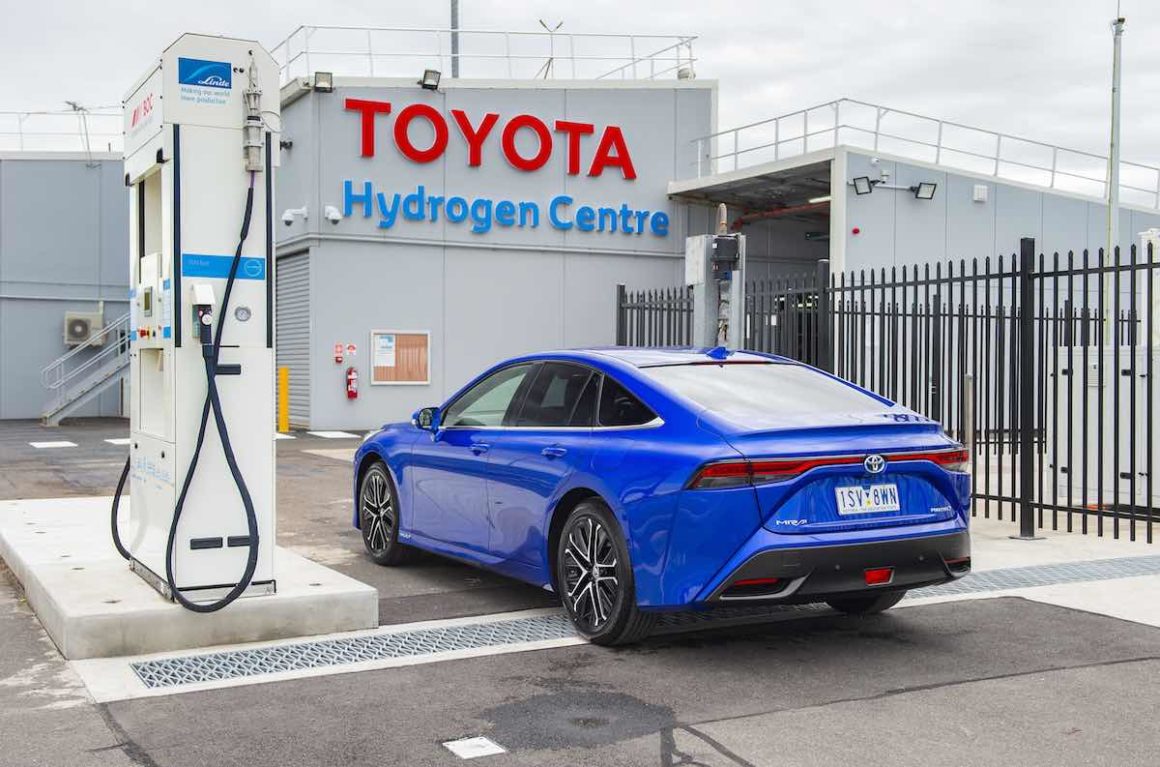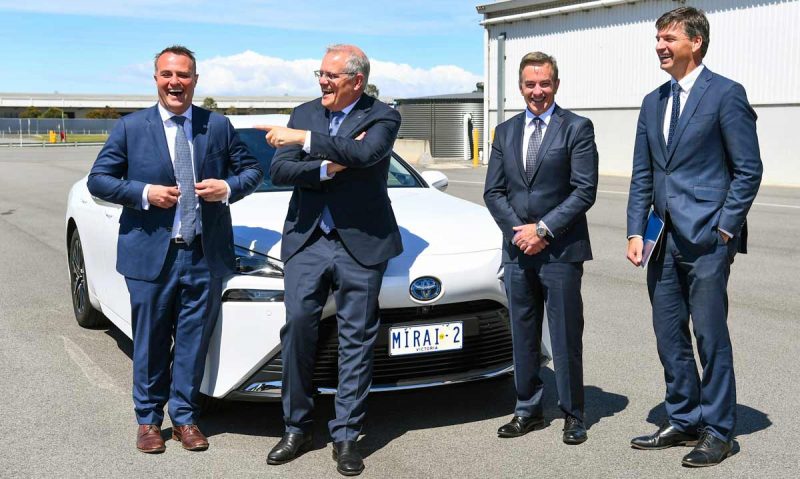Remember Scott Morrison? The former prime minister had a bit of a blind spot when it came to new technologies, insisting that electric vehicles would “ruin the weekend”, and that big batteries would be as useful as the Big Banana or the Big Prawn.
But he did get excited about hydrogen fuel cell vehicles, choosing to drive one – a Toyota Mirai – at the launch of the then Coalition government’s future fuel strategy, and declaring hydrogen to be a “game changer” for Australia because of their longer range.
As predicted at the time, that proved to be a false hope. In Australia, more than 63,000 EVs have been sold this year, and just 10 hydrogen fuel cell cars, and none to private buyers. Across the world, more than 14 million EVs were sold in 2023, and just 14,000 hydrogen fuel cell cars.
In the last two weeks two key reports have been released that have more or less buried the idea. The Climate Change Authority’s detailed sector pathways review for Australia’s net zero target made no mention of hydrogen cars for light vehicles, or even small trucks.
In the federal government’s updated National Hydrogen Strategy that was released late last week, hydrogen cars barely got a mention. It did identify three industries – iron, alumina and ammonia – where hydrogen could best be used to build new export industries.
Both reports also suggested that hydrogen may have a role to play in aviation, shipping, electricity storage and heavy transport (although even the likes of BHP have dismissed that, saying battery electric will likely win there), but acknowledge that hydrogen can’t compete with battery electric cars.
It shouldn’t be a surprise. One of the biggest advocates of hydrogen fuel cell cars was Alan Finkel, the former chief strategist who played a lead role in developing the first National Hydrogen Strategy in 2019.
But in 2023, Finkel conceded that – after leasing and driving a Toyota Mirai, as well as a Tesla EV – the hydrogen car would lose out to battery electric vehicles, because of higher costs and lower efficiency.
“Nothing can compete with the extraordinary convenience and performance of a battery electric car,” Finkel told The Driven podcast. “So I’m pretty sure that all passenger vehicles, not all but the vast majority of passenger vehicles and most small commercial vehicles will be battery electric.”

Australia was one of the countries that was supposed to be ideal for hydrogen fuel cell cars, because of the long distances that are travelled. Car makers such as BMW still harbour hopes that it will have a role to play, having brought two prototypes of its iX5 hydrogen car to Australia, recently, as part of the global pilot test program.
But its biggest problems are efficiency. Battery electric cars are less polluting than petrol or diesel cars, even in a grid still dominated by fossil fuel’s like Australia. But that is not the case with hydrogen, because the process of electrolysis requires significantly more power. And it’s costly, even before adding in the processing and transport costs.
And the infrastructure is expensive too. The $7.4 million Toyota Hydrogen Hub that Morrison visited in 2021 was capable of producing just 83 kilograms of hydrogen a day. A Mirai requires 5 kg to top up – it might be quick, but it’s a question of capacity.
A report compiled by Toyota to the Australian Renewable Energy Agency, which funded part of the project, revealed that at most it could refuel seven vehicles a day – six Mirai, two forklifts and one heavy truck. Over the four month period cited in the report to March, 2022, it achieved 164 refuelling events, or just over one a day.
Still, car makers are still pushing the technology, particularly the Japanese and Korea car makers, partly because their economies expect to be dependent on green hydrogen for other industries where it can compete, and partly, like the fuel retailers, because the hydrogen fuel and supply chain bears some semblance to their existing businesses.

Giles Parkinson is founder and editor of The Driven, and also edits and founded the Renew Economy and One Step Off The Grid web sites. He has been a journalist for nearly 40 years, is a former business and deputy editor of the Australian Financial Review, and owns a Tesla Model 3.

